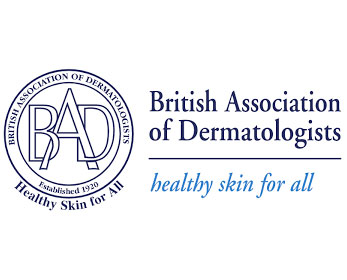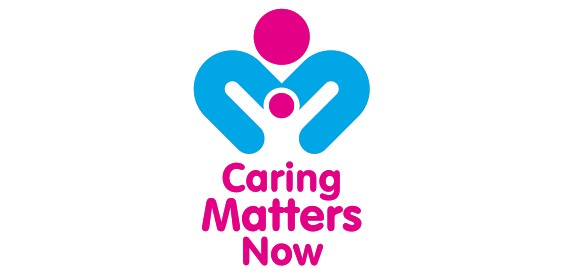What are moles?
Moles, or “melanocytic naevi”, are marks on the skin caused by a build-up of pigment cells (melanocytes), the cells which give skin its colour. “Melanocytic” refers to “melanocytes”, a cell that produces the pigment melanin, which gives the skin its colour. “Naevi” means “birthmarks” – although moles can appear later in life (acquired) as well as at birth (congenital).
Most people acquire moles throughout life while one in a hundred people are born with one or more moles. Moles may be raised or flat and can feel rough or smooth. Moles which appear between the ages of 2 and 10 years tend to be most prominent and persistent.
Moles are more common in people with white skin. Moles which appear later in life tend to do so following sun exposure. They can occur anywhere on the body and tend to vary in appearance depending on where they are found. Sometimes moles go away.
Having a mole or moles – however small or large and wherever they are located on the body – can make you feel self-conscious about your appearance. At Changing Faces, we can provide psychological, social and emotional support to help you manage the impacts of living with a visible difference. On this page, you can read about moles, their causes and typical appearance and the impact they can have. We also look at how we can help you and what other organisations can do to provide support.
Signs and symptoms
There are many types of moles (see below) and different kinds may have different appearances:
- Moles can occur anywhere on the body.
- They can be flat or protruding.
- Moles may be rough or smooth.
- Common colours include pink, dark brown, steel blue and black.
- Mole colour tends to darken with skin tone – typically, if you have black or brown skin, the mole will be darker brown than in someone with white skin.
- Moles can have an irregular shape.
- They can vary from a few millimetres to several centimetres in size.
Moles and skin cancer
You may have heard that moles can be linked to skin cancer. Moles themselves are harmless – they are the build-up of non-cancerous melanocytes. However, cancerous melanocytes can also grow, causing a type of cancer called melanoma. Melanomas may look a lot like moles at first, although they tend to grow in size and become less regular in structure over time. Non-cancerous moles may also change, for example, due to sun exposure – so, if you have a mole that is changing, this does not necessarily mean you have cancer.
People with white skin are more likely to develop melanomas as their skin produces less protective melanin than those with black or brown skin. Melanomas are more likely to develop in people who have a lot of moles than people who have relatively few.
If you notice that a mole has changed, you should speak to your GP straight away.
What causes moles?
The main reasons for moles are:
- Genetics: Your genes can influence the number of moles you have (see below).
- Sun exposure: Exposing the skin to the sun can cause moles to develop, particularly in later childhood and adulthood.
- Immune status: People on immunosuppressants are more likely to develop moles.
Are moles genetic?
Genetics is not the only reason why people have moles, but it is a significant factor. Most people have at least some moles, but genes can influence the number of moles you have. A recent study by scientists at Kings College London found that genes play a greater role than previously thought in the likelihood of having moles. A key finding was that genes are particularly influential on moles occurring on women’s legs.
Types of moles
Moles are broken down into two main categories:
- Congenital moles (moles you’ve had from birth)
- Acquired moles (moles which appear later in life)
Congenital moles (congenital melanocytic naevi)
Congenital moles – known medically as “congenital melanocytic naevi” (CMN) – are moles you are born with (although 1% appear in the first year of life). Around one in every hundred people is born with one or more moles. Large congenital moles are rare, affecting around one in 20,000 newborns. Congenital moles tend to grow in proportion to the child and often have hairs growing out of them.
Congenital moles used to be classified according to their size at birth (small, medium, large) but UK charity Caring Matters Now says that this classification is no longer used. Now, the “projected adult size” of the largest mole is used along with the total number of moles. Projected adults sizes are up to 10cm, 10-20cm, 20-40cm, 40-60cm and over 60cm. Number of moles are 0, 1-10, 10-20, 20-50, 50-100, 100-200, 200-400 and more than 400.
There are other classifications as well, describing where the moles are found as well as the pigment patterns. While these categorisations are helpful, in practice, every individual mole is different.
Acquired melanocytic naevi
Acquired moles – known medically as “acquired melanocytic naevi” – are moles which appear after birth.
There are many types of acquired moles, grouped according to factors such as their appearance, where they appear and their behaviour (for example, whether they disappear in time).
Examples include:
- Blue – deeply pigmented
- Common – flat with a single uniform colour
- Halo – surrounded by a white halo; the mole in the centre fades over time
In people with black or brown skin, acquired moles tend to be black in colour.
You can view a comprehensive guide to the different types of moles and their classifications, including pictures, on the DermNetNZ website.
How are moles diagnosed?
Moles are usually diagnosed following a visual examination by a doctor or dermatologist.
If your doctor is unsure about the diagnosis, a small hand-held device called a dermatoscope may be used to rule out melanoma. A doctor may choose to do this if a mole has changed, has developed later in adult life, looks different to your other moles or has other irregularities.
Treatments for moles
Most moles do not require treatment. However, they may be removed to prevent cancer or if they are a nuisance (for example, catching on clothing).
Sometimes, moles may also be removed because of their effect on the appearance. Moles which do not pose a health risk are not usually treated on the NHS so, if you would like to have a mole removed for this reason, you may need to pay for removal at a private clinic. However, you should speak to your GP for advice if this is something you are interested in.
Techniques for removal include:
- Surgical removal (“excision biopsy”)
- Shave biopsy (where the part of the mole protruding above the surrounding skin is removed)
- Electrosurgical destruction (where a high-frequency electrical current is passed through the skin)
- Laser treatment (to reduce the colour of the mole and remove hair)
Moles and my appearance
Having a mole or moles may make you feel self-conscious about your appearance. This can happen regardless of their size and location on the body. However, moles which are in a prominent position such as the face can cause particular challenges as they may be harder to conceal.
You may be more aware of people looking at you or even passing comments or asking questions. This can be hurtful and distressing and may impact your self-esteem.
What support can we offer for people with moles?
Here at Changing Faces, we offer a number of support services if you are struggling with the impact of moles on your appearance.
Living with a visible difference can have social, emotional and psychological effects. We offer counselling and wellbeing support to help you manage these impacts. Our trained practitioners are there to listen and provide guidance to help you navigate the challenges you may be facing. Have a look at our page to see whether counselling and wellbeing support might be for you.
We have a wide range of self-help guides including subjects from self-esteem and mental health to other people’s reactions, working life and dating. We also have a section for young people covering topics including school, making friends, social media and body image. We have guidance for parents and carers as well.
You don’t need to hide your moles to fit in with society’s expectations. However, some people choose to have skin camouflage to reduce the appearance of moles. Coverage will vary depending on whether your moles are raised and/or textured, but our Skin Camouflage Service team would be happy to speak to you about whether it may be helpful in your case. You can read more about our Skin Camouflage Service in this dedicated section of our website.
We provide a number of other services for people with moles and visible differences:
To find out more, please contact our Support and Information Line. As well as connecting you with our services, our team offer support calls so you can talk about the impact of moles on your life.



